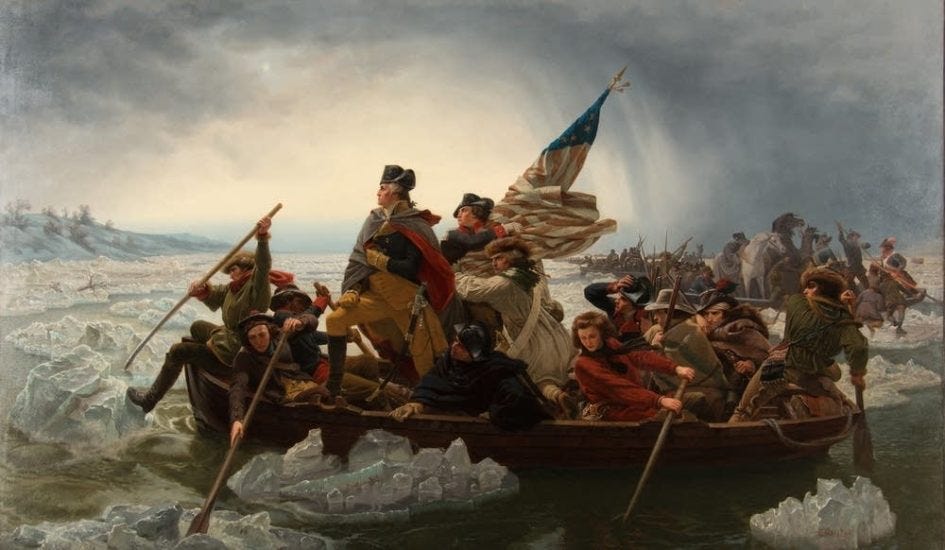Leutze's Washington Crossing the Delaware: The Iconic American Masterpiece
Emanuel Leutze’s iconic and masterful painting shows George Washington crossing the Delaware River on Christmas Night, 1776. The American cause seemed on the point of utter failure; they had lost New York, their morale was low, they didn’t have enough equipment (especially cold weather gear). General George Washington needed to pull off a miracle—and he did just that. Washington (with the crucial help of the Massachusetts Marbleheaders) managed to get his army across the ice-filled, freezing Delaware River and pull off a surprise attack on the (British-hired) Hessian garrison at Trenton on December 26.
In some ways, God clearly intervened on the American side to ensure all kinds of variables would come together; but it was also a stroke of genius on Washington’s part. There was further immense heroism from many patriot soldiers, including James Monroe (pictured in the painting) and Alexander Hamilton. Leutze, a German immigrant to America, painted a great masterpiece of art, showing Washington and his soldiers—soldiers of all ethnic and economic backgrounds—in a heroic pose on their way to what proved to be the saving grace of the American cause for liberty and independence.
“In addition to General Washington, Leutze has filled the boat with a variety of ‘types’ of soldiers. Washington and his two officers are distinguished by their blue coats, the trademark attire of a Continental officer.
The remaining nine men appear to be members of the militia. Three men row at the bow of the boat. One is an African American, another wears the checkerboard bonnet of a Scotsman, and the third wears a coonskin cap.
Two farmers, distinguished by their broad-brimmed hats, huddle against the frigid cold in the middle of the boat, while the man at the stern wears the moccasins, pants, and hat of a Native American. This collection of people suggests the all-inclusive nature of the Colonial cause in the American Revolutionary War.”
In other words, by combining an image of heroic greatness with ethnic and economic diversity and personal daring and perseverance against all odds to achieve the goal of independence, Leutze created the iconic American masterpiece.




